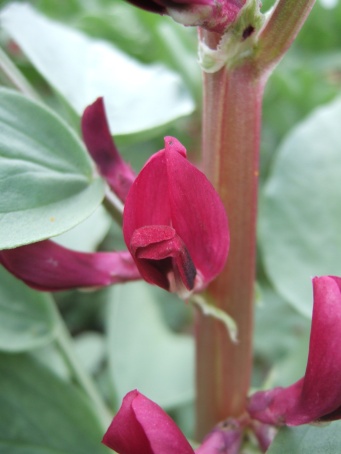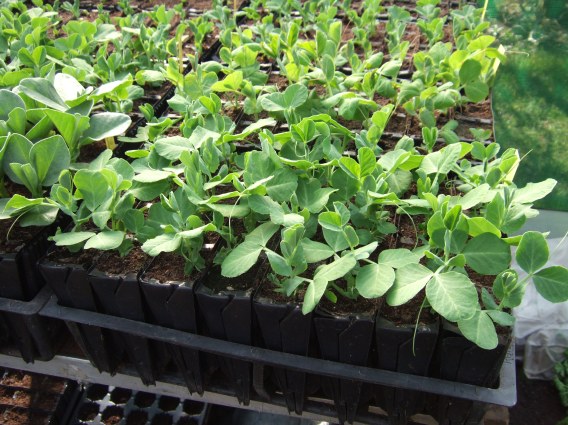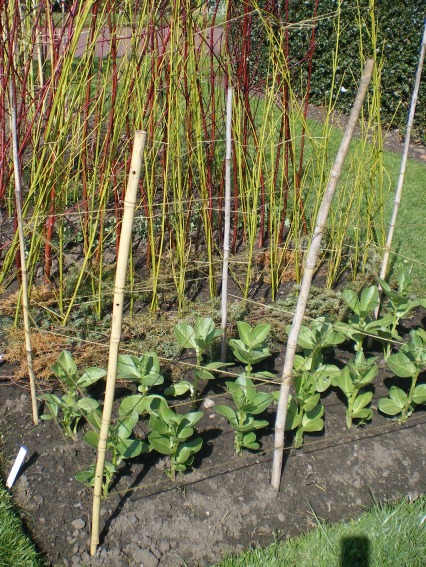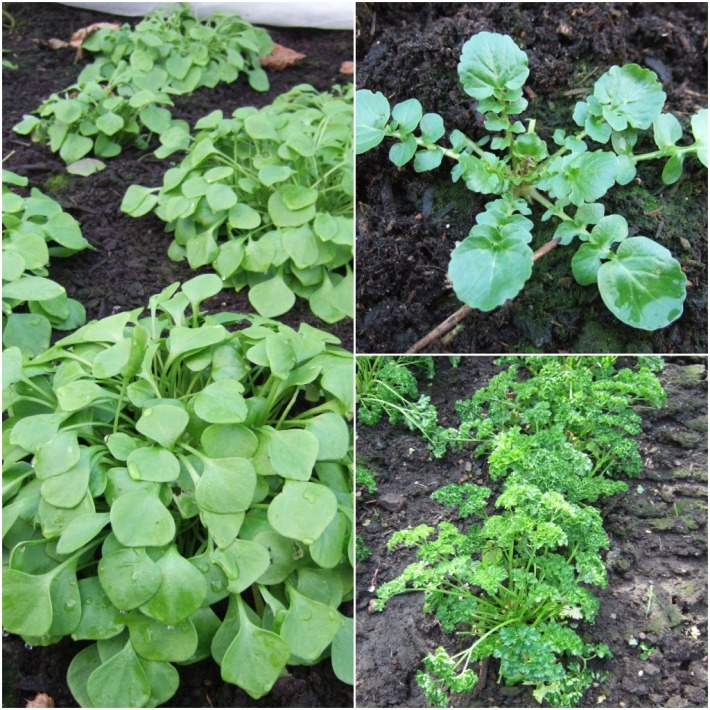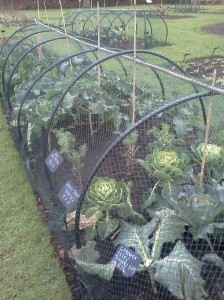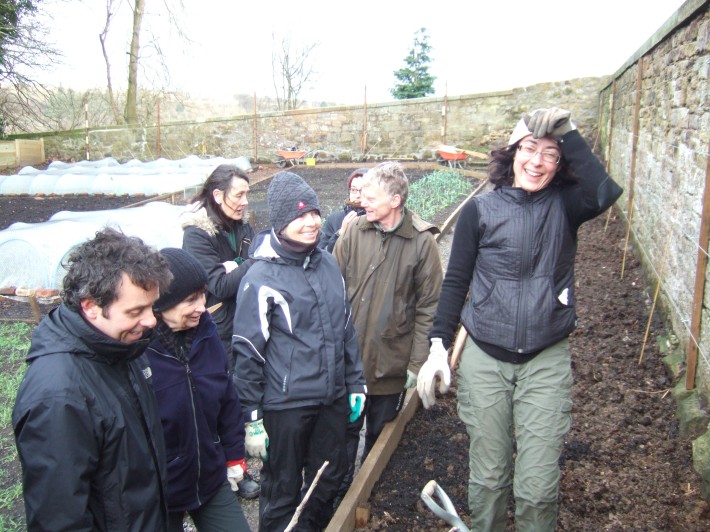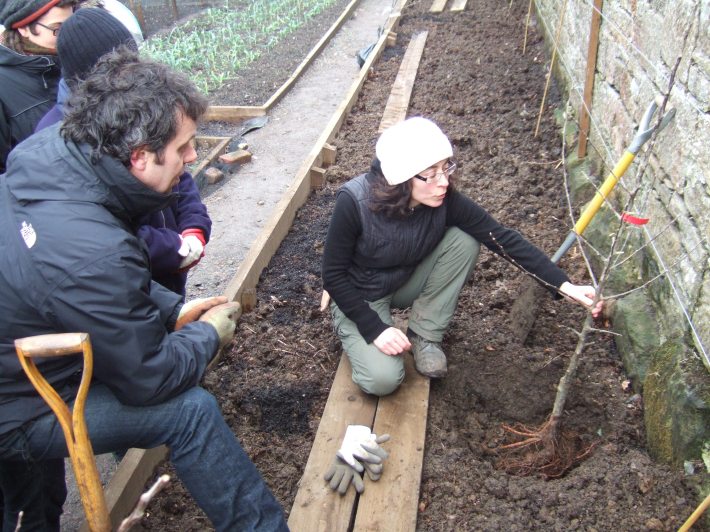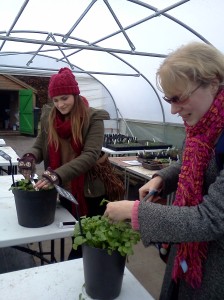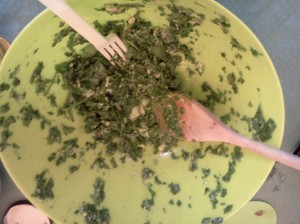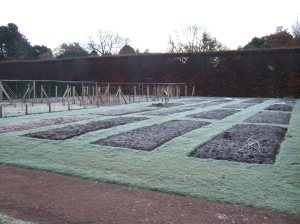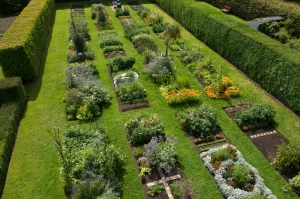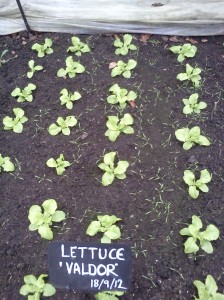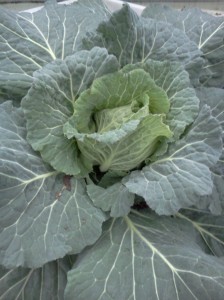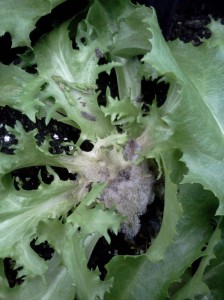Broad beans are easy to grow and provide an early summer harvest in the edible garden.
We are growing a crimson flowered variety that looks great in an ornamental kitchen garden or in containers.
The end of February or beginning of March is a good time to sow broad beans.
They can be sown directly into the ground, but will need the protection of a cloche early in the season.
Alternatively they can be sown into deep pots in a polytunnel, greenhouse or cold frame and planted into the garden in April or early May.
Sow the seeds 5 cm deep and 23 cm apart.
Mice and birds like the seeds and young shoots so try to discourage them with nets.
Broad bean plants have a tendency to flop over so it is a good idea to support them with canes and string (see photo).
Nip out the tips of the plants once the pods start to form. This helps to prevent blackfly, a sap sucking aphid. The tips of the plant can be eaten like pea shoots.
Companion planting with the aromatic herb summer savory (Satureja hortensis) is said to discourage blackfly. The flavours go well together as well!
Last year we had a problem with ‘chocolate spot’ a fungal disease that causes dark splotches on the leaves. It is encouraged by damp, humid conditions. The way to avoid it is to increase the space between plants to allow better airflow and avoid high nitrogen fertilisers (they encourage soft, infection prone growth).
Broad beans are ready to harvest in June and July. Pick the pods whilst they are still small to prevent them becoming tough.
In the kitchen broad beans are very versatile and can be used in risotto, pasta sauce, stews and salads or mashed up to make a delicious hummus-like dip.

